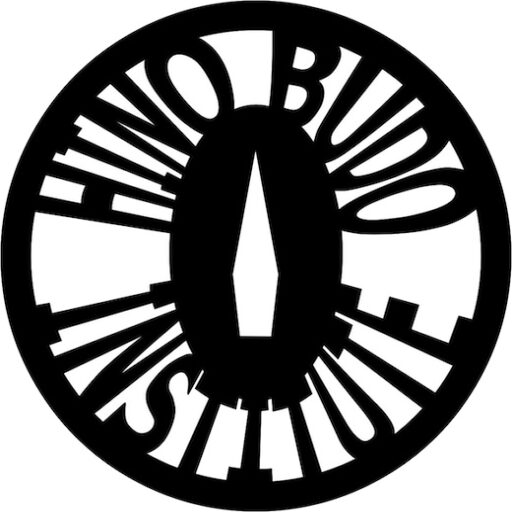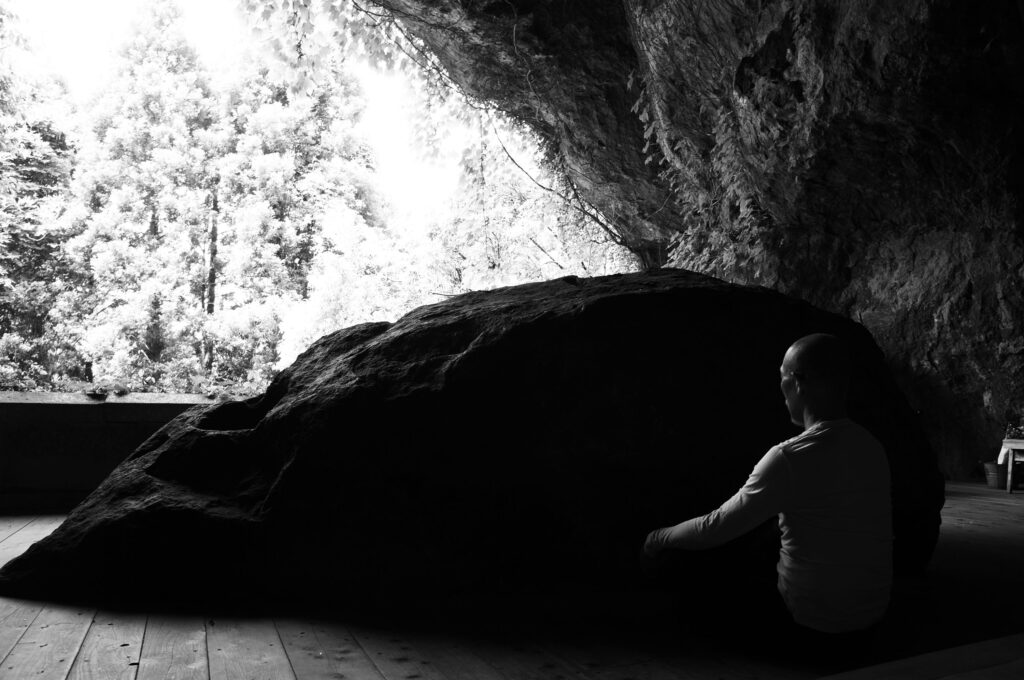
Introduction to Budo
What do you actually imagine when you hear “Budo"(Martial arts) or “practicing Budo” ?
Do any of these associations come to mind?
Discipline, ascetic training, sword, punching, throwing, becoming stronger, mental training, amazing skill, catching the sword with bare hands, kuki nage (the air throw), self defense, Master, arts of gracious etiquette, Kobudo, Jujitsu, vitality in old age Do technical associations come to mind: “Aiki” “Tanden” “Ki” “Hara” “Kiai”?
I had the opportunity to reflect on what Budo means and what it means to be a Master when the chance to interview a few Masters of various Martial Arts arose.
There are many skills and techniques involved in becoming a Master but being a Master is more than the sum of these together.
In general a master uses all of these factors and creates a skill that is beyond the normal expectation of a regular practitioner performing them.
He or she develops something called"Master skill"or"Divine skill" because it goes beyond what seems humanly possible.
If we were to ask ourselves at the beginning of training if we would be able to attain some of the capacities that a Master is capable of, we would most definitely reply "Of course NOT!" It does not seem logical to be able to reach certain capabilities based on the physiological understanding of muscles and biodynamics that we hold.
One does not become a Master by doing a Martial Art as a hobby, there is a greater level of commitment required but there is great value in the practicing in any case.
What are the skills of Budo?
The reason for practice is not for health necessarily but to evolve one's spirit.
In learning Budo the main tenents to keep in my mind while learning the skills: The enemy is not necessary only one person.
You would never knew how many weapons are hidden .
You do not know when an enemy will attack.
You must be ready for those three possibilities in everyday life.
Obviously this is different than most sports.
The deeper skills involved in preparing you for these circumstances are: Being capable to sense intentional actions.
Intuitively being able to detect artificiality in movement In practicing Budo generally and historically the application of body and mind AND spirt approach differentiates it from sport.
Budo in modern life
“Five Rings” is a well known book by “Miyamoto Musashi" who was a sword master from about 400 hundred years ago.
His book was translated in many different languages and became a best selling book.
It has been read as business strategy because of its practicality. You don't have to be in business to be able to gain insight and practical guidance from Musashi's mastery.
It is a natural state of being human to have to face ever-changing conditions.
We are constantly having to be in challenging situations whether it is co- workers, family, society, new conditions.
We need the skills to meet each situation with mastery and Budo is valuable for learning these skills.
What is Hino Budo?
Hino budo is based on the interrelationship of all things.
As I mentioned before, human beings are capable of sensing intentional actions. Intuitively human beings are able to detect artificiality.
This means that you are not supposed to move intentionally.
The movement needs to come from a deep place of interconnectivity and kinesthetic intelligence.
For this reason we practice exercises that develop these skills and on authenticity of movement.
When you think of Martial Arts you may think of the drills of many different patterns of punching and kicking.
In Hino Budo all exercises are geared toward developing kinesthetic intelligence and interrelationship.
For instance, if you are trying to throw someone then you can not think and have an intention to throw.
A person will notice it .
You may ask, “OK then, What can I do? “
In Hino Budo when we move from our deep connectivity we learn to move from an authentic place.
Let's take throwing as an example.
It is necessary to have the strength to throw but you can not show a signal that that is the action you are going to take.
The skill is to be able to go under a person’s conscious reflex and not be noticed.
In reality it is not an easy thing to execute.
We have to be able to be fully present and free of habitual thinking patterns or conditioned images that have been imprinted.
In ancient days monks and Samurai tried to learn these techniques by practicing Zen and meditation by sitting under a waterfall.
In Hino Budo to practice these skills we do more than practicing patterns of movement.
The practices are unlike any you may have seen in a Martial Arts training.
We can practice Hino Budo because of living in modern time.
Budo master Ito Itosai says, “Using our human intuition is the key to mastery of the sword.
” Which is the same thing we are saying when we say "to be in moving not in habitual patterns."
Budo Masters were active around 4-500 years ago but we are in modern time which means we have an advantage of accessing a variety of information from modern medicine, science and technology.
In the old days there was no word such as “subconscious or neural pathways” but in modern time humanity has evolved to the point that we have identified them and understand to some degree how they work.
Master skill or Divine Skill are capacities that we have within us as humans, it is however a process of learning and evolving one's spirit to be able to identify them and understand how they work within us.
Summary of Hino Budo in practice:
- Motion and action need to be made in relationship.
- Be the person who meets and is responsive to the demands and changes in any situation.
- Be able to catch one's own unconscious reaction(sense of incongruity)
- Be a person who does not create enemies.
We practice a variety of situations to learn this skill.
In order to learn these skills we have practices that go beyond the repetition of patterns.
The practices are unlike any other Martial Arts training.
It is something to be experienced and geared towards developing deep intuitive and kinesthetic intelligence.
This Budo Juku will work and help various people.
It is a great practice for athletes, dancers or anybody who uses the body for performance or anybody who wants to be in relationship with their body.
If you are interested please come and see.
Dance as interaction
March 2005, the eye-opening body' movement and the concept were brought into contemporary dancers in Germany by a Japanese Budo-ka.
Those dancers who are affiliated with the Forsythe company and William Forsythe himself. Hino had held a workshop according to the invitation of the company.
Akira Hino has shown me the most significant example of human awareness that I have ever witnessed.
He has mastered a degree of perceptual unity so profoundly fundamental, that is almost incomprehensible to our contemporary sensibilities.
Akira Hino has devoted his time, his care, and his expertise to the training of my dance ensemble.
His influence on our work has been of inestimable value.
The source of his work resides in the heart of the most profound aspects of the danced.
The dancers who have the opportunity to work with Hino San will be fundamentally changed.
This work brings the body into an intimate and articulate relationship with the phenomenal world; a world that rejoices in the perfect and miraculous present.
William Forsythe
Featured in magazines
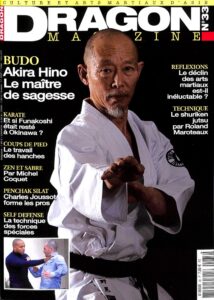
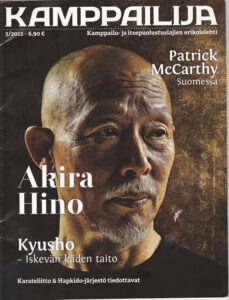
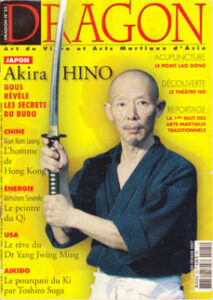
Books
Don’t Think, Listen to the Body!
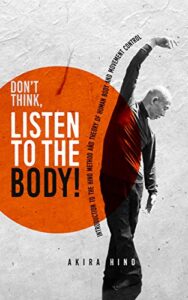
Introduction to the Hino Method and Theory of human body and movement control (English Edition)
At last, the lifetime work of a remarkable Japanese martial artist Akira Hino has condensed into one book titled "Don't Think, Listen to the Body!" The book proposes a new perspective on human body and movement and provides plenty of practice examples to awaken and increase enduring power within you. It is a must read for those who seek insights into what it means to be truly strong.
- Publisher : Independently published (January 3, 2019)
- Language : English
- Paperback : 222 pages
Kokoro no Katachi --- The Image of the Heart
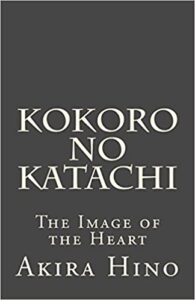
Originally written in Japanese and published in Japan in 2002, "Kokoro no Katachi - The Image of the Heart" has been offering a unique perspective on the Japanese martial arts (Budo or Bugei) and their cultural significance to many readers. "What is true Budo?" "What does the journey to become a master of Budo entail?" Driven by those burning questions, the author Mr. Hino examines and illuminates the wisdom of legendary masters, especially the world's most well-known grand master of Japanese martial arts Masaaki Hatsumi (1931-). His personal encounter and interview with Mr. Hatsumi makes the essence of ancient martial arts real and alive in present times. With a new epilogue added, the book is now available in English as a complete edition.
- Publisher : CreateSpace Independent Publishing Platform; 2nd edition (31 May 2013)
- Language : English
- Paperback : 203 pages
International Seminars, Workshops, and Study Tours
Hino-Budo Workshops
2008 Paris 2009 Paris 2010 Toronto 2010 Paris 2011 Paris & Brussels 2011 Valencia 2012 Valencia 2012 Paris, Brussels, Amstedam & Helsinki
Dance related Workshops
2005 Forsythe Company(Frankfurt) 2006 Forsythe Company(Frankfurt) 2007 Forsythe Company(Frankfurt) 2008 Italy 2009 Geneva 2009 Forsythe Company&Paris 2009 Venice 2010 Paris&ForsytheCompany 2011 Cullberg Ballet(Sweden) 2011 Tronto 2012 Forsythe Company(Frankfurt) 2012 Cullberg Ballet(Sweden)
Please feel free to contact us
Hino Akira has held seminars frequently in Japan and Europe.
・For people learning the martial arts
・For the performer such as a dancer, a musician, an actor and people want to know the relationship of body and mind
・For medical workers such as a doctor, a nurse, a therapist
